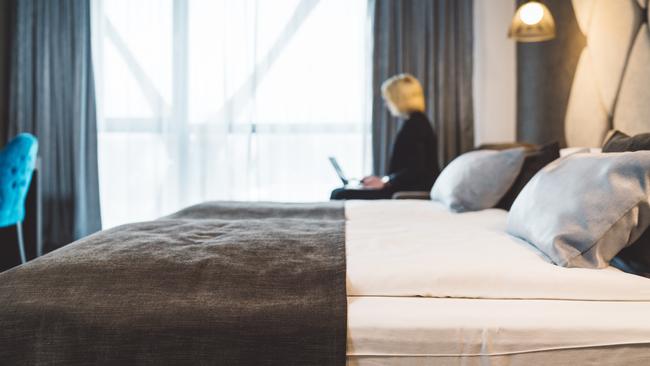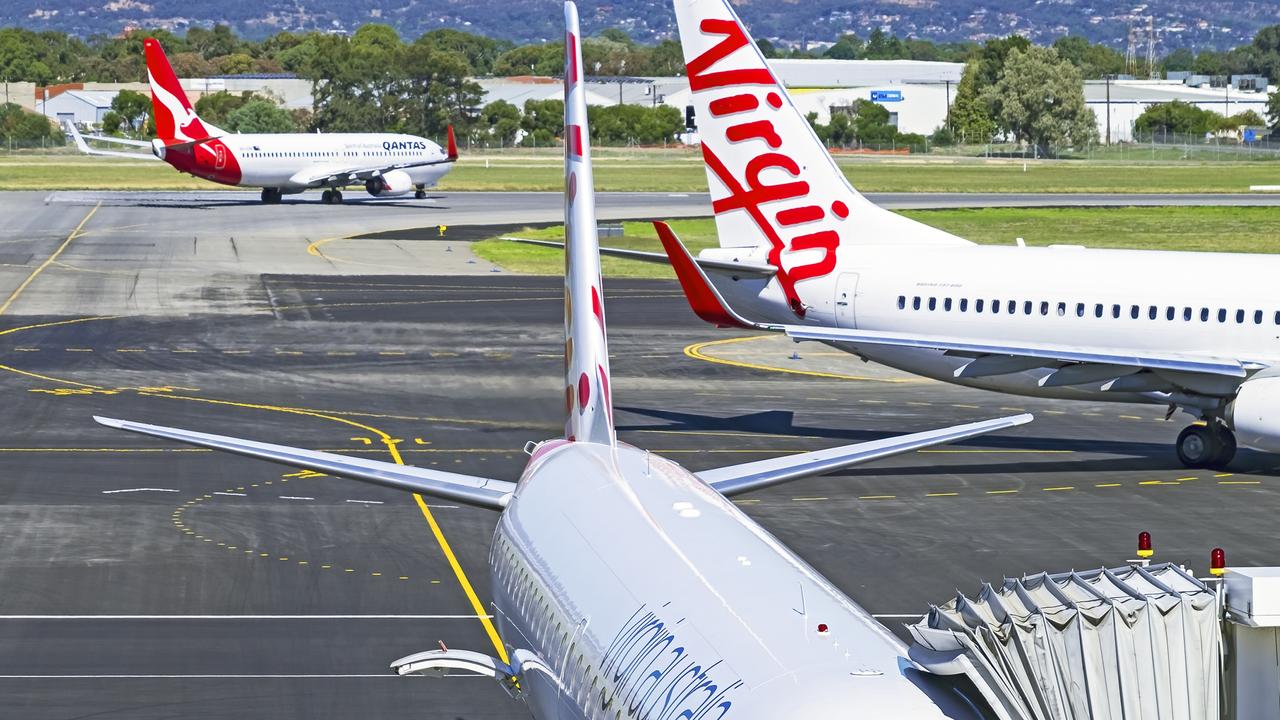Australians leading the charge in the extraordinary resurrection of the business trip
Predictions the Covid pandemic would kill off travel for work have failed to materialise, with new data showing Australians are now among the biggest business travellers in the world.

Business
Don't miss out on the headlines from Business. Followed categories will be added to My News.
Australians travel more for work than almost any other nation, with new data showing over a third of businesses send one or more employees on at least one trip a week.
A global Flight Centre Travel Group survey found 37 per cent of Australian and New Zealand businesses sent staff on weekly work trips, compared to 32 per cent of US companies and 22 per cent of those in Asia.
The figure rose to 44 per cent for monthly business trips in Australia and New Zealand, while only half a per cent of the 6500 companies surveyed said they never travelled for work.
The small and medium enterprise division of FCTG, Corporate Traveller, pointed to a number of factors as shaping domestic travel trends.
Corporate Traveller managing director Tom Walley said these included the decentralisation of businesses, surging internal regional migration and the regional infrastructure boom.
“Since pandemic restrictions eased, there has been well-documented internal migration from major capitals such as Sydney and Melbourne to regional Australia, with the coastal hotspots of Byron Bay and the Sunshine Coast seeing an influx of professionals calling the regions home,” Mr Walley said.
“Enhanced regional airports, improved transportation links, and the development of business-oriented accommodations reflect a commitment to supporting domestic mobility, helping to make domestic travel more accessible and efficient.”
He said it was no surprise Australians and New Zealanders were leading the charge in the business travel space, with an affinity for travel embedded in both cultures.
“As we move into 2025, we expect Australian and New Zealand businesses to continue leading domestic travel, leveraging it as a proven tool for business success, and a way for flexible work teams to connect, network and engage on a far more impactful level,” Mr Walley said.

As one of Australia’s largest builders, Metricon is among the companies helping to fill domestic flights, with its 2500 employees travelling frequently.
Metricon spokeswoman Simone King said with offices across Victoria, NSW, Queensland and South Australia, team members were required to travel to support cross-office collaboration, oversee major projects and execute national initiatives.
“Travel is critical for us in getting business done,” Ms King said.
“Travel frequency varies by role but is particularly common for our management teams, and is typically focused on regions where we have offices.”
Although the embrace of video conferencing technology during the pandemic was predicted to shrink business travel post-Covid, Ms King said that had not been the case for Metricon.
“We’ve always found that having time face-to-face with each other, our customers and suppliers is the best way to do business, which is why we’ve always maintained and even grown the amount our key team members travel.”
Domestic aviation data compiled by the Bureau of Infrastructure, Transport and Regional Economics for August showed the number of passengers carried on domestic flights, including charter, was only 1.7 per cent lower than five years ago.
In addition, regular public transport flights were fuller than they were a year ago, due to a reduction in the number of available seats following the demise of Rex’s 737 operations and Bonza.
On average, 83.5 per cent of seats were filled on domestic services compared with 79.8 per cent at the same time last year.
The routes where passengers were least likely to score an empty seat next to them included Gold Coast-Melbourne, Melbourne-Sunshine Coast and Cairns-Melbourne.
More Coverage
Originally published as Australians leading the charge in the extraordinary resurrection of the business trip





